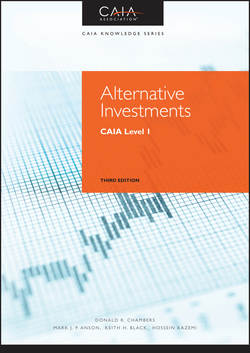Читать книгу Alternative Investments - Hossein Kazemi - Страница 46
На сайте Литреса книга снята с продажи.
PART One
Introduction to Alternative Investments
CHAPTER 3
Quantitative Foundations
3.4 Problems with Internal Rate of Return
3.4.3 IRRs Should Not Be Averaged
ОглавлениеAnother challenge to using IRRs involves aggregation. Aggregation of IRRs refers to the relationship between the IRRs of individual investments and the IRR of the combined cash flows of the investments. Suppose that one investment earns an IRR of 15 % and another earns an IRR of 20 %. What would the IRR be of a portfolio that contained both investments? In other words, if the cash flows of two investments are combined into a single cash flow pattern, how would the IRR of the combination relate to the IRRs of the individual investments? The answer is not immediately apparent, because the IRR of a portfolio of two investments is not generally equal to a value-weighted average of the IRRs of the constituent investments. If the cash flows from two investments are combined to form a portfolio, the IRR of the portfolio can vary substantially from the average of the IRRs of the two investments.
This section demonstrates the difficulty of aggregating IRRs, and the following extreme example illustrates the challenges vividly. Consider the following three investment alternatives:
The IRRs of the three alternatives are easy to compute because each investment simply offers two cash flows: one at time period 0 and one at time period 1. Using Equation 3.9, the IRR for a one-period investment is found by solving the equation 0 = CF0 + CF1/(1 + IRR), which generates the equation
Inserting the values for Investment A (CF0 = –100, CF1 = +110) generates the IRR of 10 %, shown in the IRR column. Investments B and C both have CF0 = –CF1, so the IRRs of both Investment B and Investment C are 0 %.
One might expect that combining Investment A with either Investment B or Investment C would generate a portfolio with an IRR between 0 % and 10 % because one investment in the portfolio would have a stand-alone IRR of 10 %, as with Investment A, and the other would have a stand-alone IRR of 0 %, as in the case of either Investment B or C. But IRRs can generate unexpected results, as indicated by the following analysis:
The computations simply sum the cash flows of two investments and compute the single-period IRR of the aggregated cash flows. The IRR of combining Investments A and B is –20 %, and the IRR of combining Investments A and C is +20 %. The IRRs of both combinations are well outside the range of the IRRs of the individual investments in each portfolio. What generates the unexpected result in this example is that Investments B and C begin with cash inflows and end with cash outflows (i.e., they are borrowing investments). But in practice, alternative investments, such as commodity or real estate derivatives and private equity, can have cash flow patterns sufficiently erratic to cause serious problems with aggregation of IRRs.
